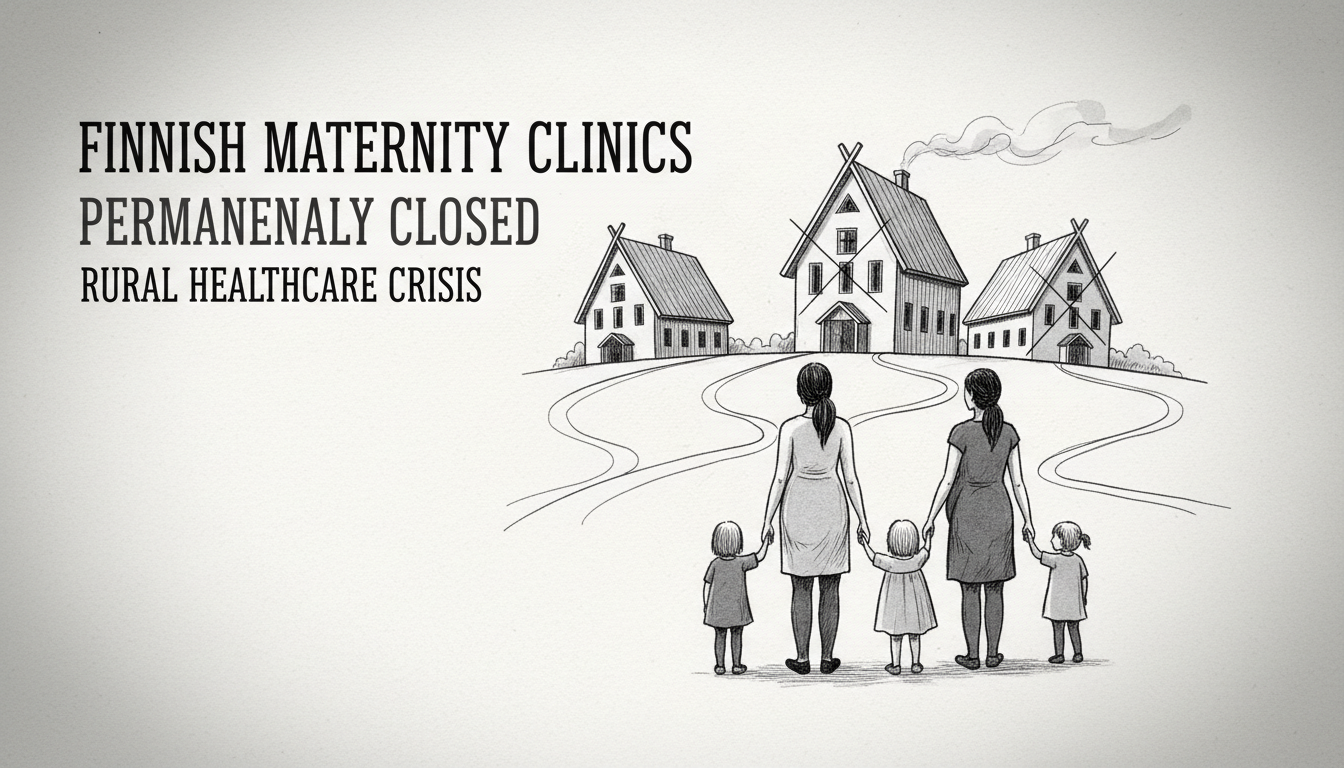Three maternity and child health clinics in southern Finland will shut their doors permanently at the end of December. The closures affect facilities in Hausjärvi's Hikiä and Loppi's Launosten and Läyliäinen districts. Local families will need to travel to different locations for future healthcare services.
Healthcare officials confirmed the permanent shutdown of these Finnish maternity clinics. The Hikiä clinic operations will transfer to Oitti's facility. Launosten and Läyliäinen services will move to Loppi's main church village clinic. These changes take effect during the first week of January.
This consolidation reflects broader trends in Finnish municipal healthcare. Rural areas across Finland face similar service reductions as populations concentrate in urban centers. The Nordic welfare model struggles to maintain comprehensive services in sparsely populated regions.
Families previously using these clinics must now visit Oitti, Loppi church village, or Riihimäki facilities. The changes mean longer travel times for many rural residents. Public transportation options in these areas remain limited, creating additional challenges for families with young children.
Healthcare workers described the closures as emotionally difficult. Staff members expressed sadness about ending long-standing community relationships. They acknowledged the impact on families who have relied on these local services for generations.
Finnish maternity clinic closures have occurred increasingly in recent years. Municipal mergers and cost-cutting measures drive these service centralizations. The trend highlights tensions between maintaining accessible rural healthcare and managing public finances.
What does this mean for international readers familiar with Finland's reputation for excellent family services? Even the Nordic welfare state must make difficult choices about resource allocation. Rural residents increasingly face the reality of traveling longer distances for basic healthcare.
The closures come during a challenging period for Finnish municipal economics. Many local governments struggle with rising costs and demographic changes. Service consolidation represents one response to these financial pressures.
Local officials emphasize that service quality will remain high at the receiving clinics. They note that combined resources might actually improve some specialized services. The larger facilities can offer more comprehensive care options in some cases.
This situation mirrors challenges throughout rural Scandinavia. Sweden and Norway face similar decisions about maintaining remote healthcare access. The balance between cost efficiency and service accessibility remains difficult to achieve.
Families affected by the changes will receive detailed information about transition arrangements. Healthcare providers promise minimal disruption to ongoing care plans. They encourage families to contact the new clinics directly with specific questions.
The permanent closure of these community institutions marks the end of an era for local residents. These clinics have served multiple generations in their respective communities. Their absence will leave noticeable gaps in the local social fabric.

